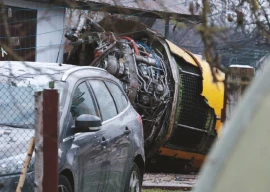
The suicide bombing is one of the bloodiest attacks in weeks as political tensions simmer following an inconclusive election more than five months ago and ahead of the end of US combat operations this month.
The attack occurred at the site of what used to be the Defence Ministry under Saddam Hussein, turned into an army recruitment centre and military base after the 2003 US-led invasion.
One army source who declined to be identified said there might have been two suicide bombers, a hallmark of Sunni Islamist al Qaeda and its local affiliates.
"They (the recruits) were gathering in large numbers. They let in 250 recruits at a time," the source said.
The bloodshed was the latest in a steady drumbeat of attacks since a March 7 election produced no outright winner and as yet no new government. While overall violence in Iraq has fallen sharply since the height in 2006-07 of the sectarian slaughter between majority Shi'ites and once dominant Sunnis, a stubborn insurgency remains capable of carrying out large scale attacks.
Iraqi and US officials say the insurgents are trying to exploit political tensions stirred up by unsuccessful coalition talks between the major Shi'ite political factions and a Sunni-backed cross-sectarian alliance which won a narrow victory in the March election.
They are also putting the Iraqi security forces to the test ahead of the formal end of U.S. combat operations this month and the reduction in U.S. troop levels to 50,000 by Sept. 1, part of a plan leading to a full-scale withdrawal in 2011.



1732626034-0/BeFunky-collage-(92)1732626034-0-165x106.webp)


1732618327-2/Untitled-design-(7)1732618327-2-270x192.webp)










COMMENTS
Comments are moderated and generally will be posted if they are on-topic and not abusive.
For more information, please see our Comments FAQ